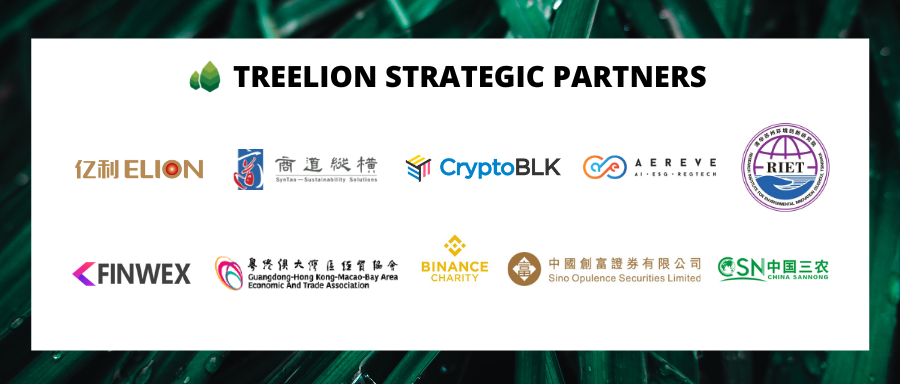
This article organizes and summarizes 12 carbon emission databases, and attaches database links to facilitate access
- China Greenhouse Gas Emission Coefficient Library for Product Life Cycle to facilitate organizations, enterprises and individuals accurately, conveniently and uniformly calculate carbon footprints, the China Urban Greenhouse Gas Working Group (CCG) organizes 53 professional researchers to freely and voluntarily build a full-life-cycle greenhouse gas emission coefficient set (2022) for Chinese products and make them all public. Accounting, measurement and evaluation of GHG emissions in the whole life cycle of products are of great significance for managing GHG emissions from the consumer side and promoting carbon emission reduction based on the industrial chain. It is also an important data support for China to achieve carbon peaking and carbon neutrality.
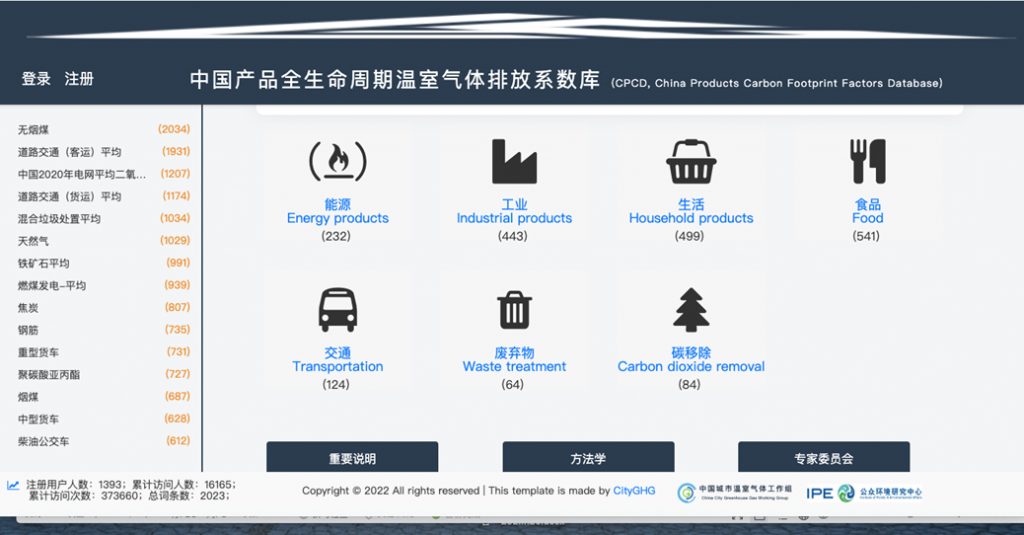
Data download address: http://lca.cityghg.com/pages/item/3194/5
2. China Emission Accounts and Datasets (CEADs): CEADs is a collection of nearly 1,000 Chinese and foreign experts under the joint support of the National Natural Science Foundation of China, the International Cooperation Projects and Key R&D Programs of the Ministry of Science and Technology, and the UK Research Council. Scholars collect and verify data through crowdfunding, and jointly compile a multi-scale carbon accounting inventory and social economy and trade database covering China and other developing economies, and provide free data sharing and download for academic research.
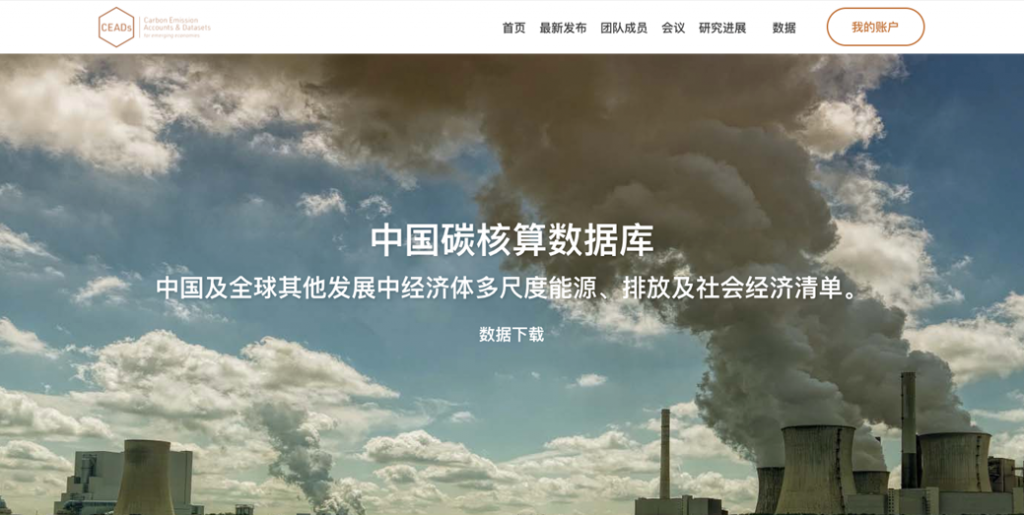
Data download address: https://www.ceads.net.cn/data/
3. Multi-resolution Emission Inventory for China (MEIC): The MEIC is a set of anthropogenic sources of air pollutants and greenhouse gases in China developed by Tsinghua University based on a cloud computing platform. Emission inventory model, through the establishment of source classification and classification system and emission factor database, research and development of emission inventory technology based on technology and dynamic process, development of multi-scale high-resolution emission source model, and on this basis, based on cloud computing platform technology to integrate, establish The China Multiscale Emission Inventory Model (MEIC) provides standardized, accurate, and timely high-resolution dynamic emission inventory data products for scientific research, policy assessment, and air quality management.

Data download address: http://meicmodel.org/?page_id=560
4. Global Real-Time Carbon Data (Carbon Monitor): The global real-time carbon database covers high-resolution activity data of global electricity, industry, ground transportation, air transportation, residential consumption and other sectors, covering global carbon dioxide with daily resolution Emissions is currently the only data platform that can provide a spatial display of global carbon emissions at a daily resolution. It can provide basic data support for scientific research and policy evaluation, and greatly shorten the response tim e of low-carbon policies. Based on the global real-time carbon emission database, the real-time panoramic carbon map further realizes the visualization of carbon emissions with the highest spatial and temporal resolution in the world. The “real-time panoramic carbon map” covers all regions of China.

Data download address: http://www.carbonmonitor.org.cn
5. The World Bank (WB) database: The World Bank Group has 189 member countries, employees from more than 170 countries, and offices in more than 130 places. The World Bank Group is a unique global partnership of five institutions working together to find sustainable ways to reduce poverty and build shared prosperity in developing countries. As the world’s largest source of funding and knowledge for developing countries, the five institutions of the World Bank Group are committed to reducing poverty, promoting shared prosperity, and promoting sustainable development.

Data download address: https://data.worldbank.org.cn/indicator/EN.ATM.CO2E.KT?view=chart
6. About the International Energy Agency (IEA): The IEA is an intergovernmental organization headquartered in Paris, France. It was established in November 1974 by the Organization for Economic Cooperation and Development in response to the energy crisis. The IEA is committed to preventing fluctuations in oil supply, and also provides statistical information on the international oil market and other energy fields. The purpose of the establishment of the IEA is to promote the formulation of rational energy policies around the world, establish a stable international oil market information system, improve the global energy supply and demand structure and coordinate the environmental and energy policies of member countries. The IEA Secretariat has become the authority on global energy statistics. The Secretariat publishes the Oil Market Report once a month and the Global Energy Outlook twice a year. These two energy reports
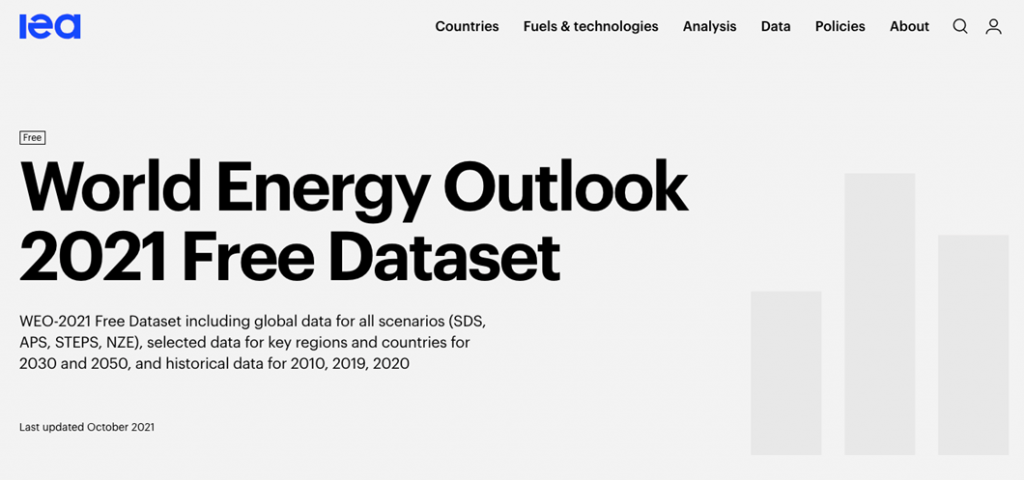
Data download address: https://www.iea.org/data-and-statistics/data-product/world-energy-outlook-2021-free-dataset
7. The Emissions Database for Global Atmospheric Research (EDGAR) of the Netherlands Environmental Assessment Agency (PBL): The Global Atmospheric Research Emissions Database is based on publicly available statistical data for scientific researchers and Policymakers provide independent estimates of global anthropogenic emissions and trends in emissions. This scientifically independent emissions inventory features consistent world historical trends from 1970 to x-3, including emissions of all greenhouse gases, air pollutants and aerosols. The database provides data for all countries, with emissions by major source category and spatially distributed on a 0.1 x 0.1 grid across the globe. Specifically, EDGAR includes total carbon emissions by country, emissions by sector, emissions per unit of GDP, and emissions per capita. In its 2020 report, it presents fossil carbon dioxide emissions and per capita and GDP trends for the period 1990-2020.
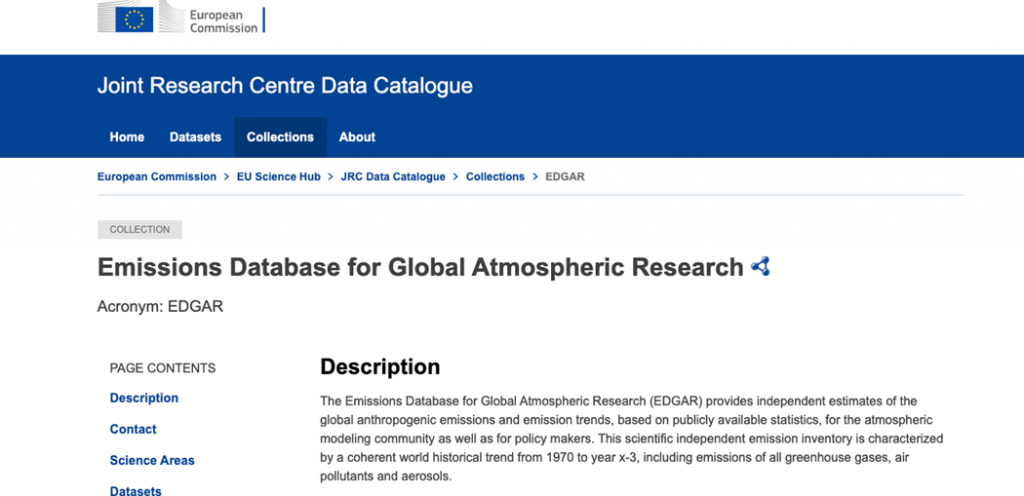
Data download address: https://data.jrc.ec.europa.eu/collection/edgar
8. Global Carbon Budget (GCB): The GCB database describes in detail all datasets and model results of the database, and all datasets that will contribute to the GCB are integrated in two Excel files, one for the GCB and one for the national-level emissions inventory. The scientific goal of the GCB is to fully understand the global carbon cycle, including its characteristics and interactions. Synthesize current understanding of the global carbon cycle and provide rapid feedback to research institutions, governments and the public. Provide a global coordination platform for regional/national carbon plans to strengthen research on broader national and regional carbon research plans and other related discipline projects through better coordination, clear goals and development of conceptual frameworks.

Data download address: https://www.icos-cp.eu/science-and-impact/global-carbon-budget/2021
9. About World Resources Institute (WRI): Founded in 1982, WRI is committed to providing objective analysis, participating in policy decisions, and taking into account economic development, natural resources and the environment. Address pressing global challenges. Since its inception, WRI has worked closely with governments, businesses, urban policy makers and communities on a long-term basis based on scientific analysis.
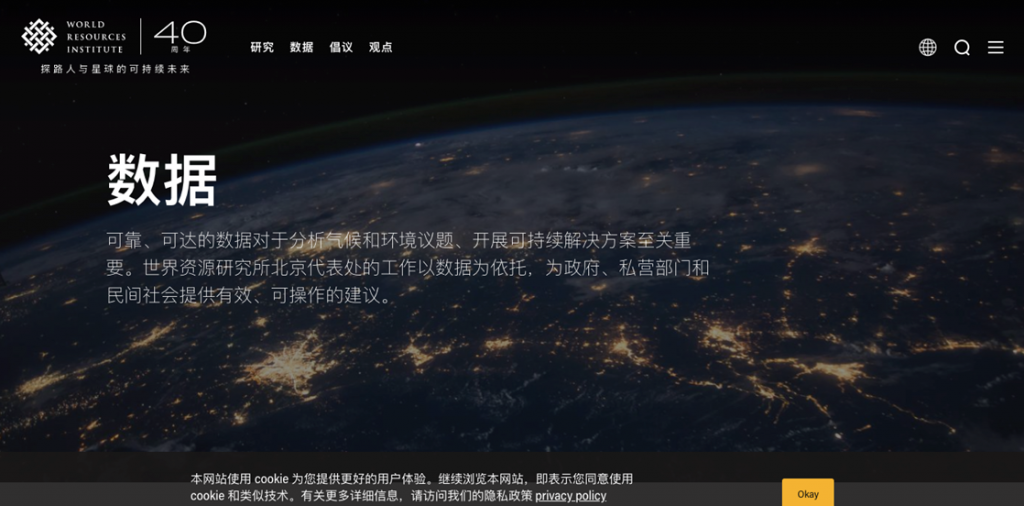
Data download address: https://wri.org.cn/data
10. About the U.S. Energy Information Administration (EIA): Established in 1977, the U.S. EIA is the energy information data statistics and analysis agency of the Department of Energy, and also provides support services for the U.S. government’s energy decision-making. EIA conducts comprehensive data collection, covering essentially the full spectrum of the energy sector, as well as informative energy analysis, including monthly short-term forecasts of energy market trends and long-term U.S. and international energy prospects.

Data download address: https://www.eia.gov/international/data/world
11. About the Carbon Dioxide Information Analysis Centre (CDIAC) of Oak Ridge National Laboratory: Compared with many traditional data centers of basic disciplines (for example, meteorology or oceanography), the scope of the Carbon Dioxide Information Analysis Center includes information for users. Anything of value potentially related to the greenhouse effect and global climate change, active gases emitted in the atmosphere including carbon dioxide; the role of the terrestrial biosphere and oceans in the biogeochemical cycle of greenhouse gases; carbon dioxide emissions to the atmosphere; Long-term climate trends; the effects of high levels of carbon dioxide on plants; and the vulnerability of coastal areas to rising sea levels. The CDIAC data archive ended operations in September 2017, and data collected over the past 30 years of operation is being transitioned to the new archive.

Data download address: https://cdiac.ess-dive.lbl.gov
12. The United Nations Framework Convention on Climate Change (UNFCCC) database: The Convention was signed at the United Nations Conference on Environment and Development held on June 3, 1992, and entered into force on March 21, 1994. The UNFCCC consists of a preamble and 26 main texts. It is the world’s first legally binding international convention to comprehensively control greenhouse gas emissions and address climate change. Basic framework for national cooperation. Currently, 197 countries have ratified the UNFCCC, and these countries are known as parties to the UNFCCC. The Convention provides for the holding of a Conference of the Parties annually. The Conference of the Parties is the highest-level meeting of the UNFCCC.
Data download address: https://unfccc.int/annualreport
